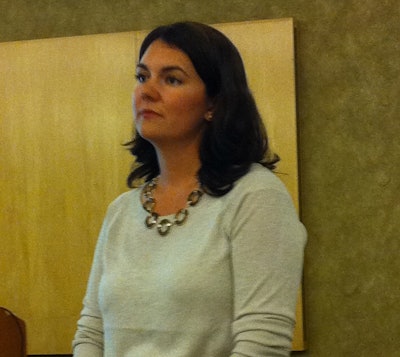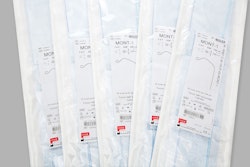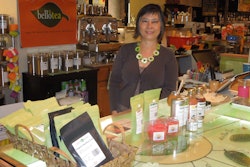When it comes to the less-than-stellar recycling rates for packaging materials in the U.S., it’s not the recycling infrastructure that’s at fault; it’s the industry’s efforts at communicating to consumers how to recycle that is lacking. That’s according to Sandra Lewis, Vice President of Government Relations and Industry Affairs at Earth911, Inc., who spoke on “Emerging Trends and Technology in Food Packaging Recycling” at the 2013 Global Sustainability Summit. The summit, an annual event organized by the Food Marketing Institute (FMI) and the Grocery Manufacturers Assn. (GMA), took place this year in Seattle and was aptly titled, “Uncover the Possibilities.”
Lewis, a compelling speaker who has presented at numerous sustainable packaging-related events, made an excellent case to audience members on the confusion facing consumers today related to proper recycling, and on ways brand owners can begin “move the needle forward” in regards to packaging material recovery.
Setting the stage, Lewis used select examples from the Earth911.com recycling database to demonstrate how complex the issue of recycling is for consumers given the lack of consistency and standardization across municipalities and materials. For example, whereas a clear glass bottle may be recyclable in many parts of a given state, not so for colored glass bottles. The same may hold true for a rigid high-density polyethylene container with a narrow neck versus one with a wide-mouth opening, etc. “Now a consumer has to think, ‘What color is my glass? What shape is my container? What’s inside my container? What’s the number on my container?’” Lewis said. “And we wonder, ‘Why don’t more people recycle? Why is it only 30 percent? I don’t understand, it’s not like it’s that hard.’”
Lewis noted that many of the industry’s ideas around increasing recycling rates tend to focus on investments and changes in the country’s recycling infrastructure. But, as Ameripen’s recent 100 Cities study revealed, we have the necessary infrastructure; it’s just not being utilized. “Before we swap out our nation’s entire recycling infrastructure, let’s get consumers to utilize it,” Lewis advised.
But how to change consumer behavior, when at the most, Lewis noted, the most communication they probably receive to educate them on local recycling is a generic brochure sent once a year? “Have we given up on consumers?” she asked. “At Earth911, we haven’t given up on consumers, in fact, we believe they are the solution.”
Moving the needle forward
Lewis’ prescriptions for changing consumer behavior around packaging involve two themes: multiple touch points and product-based search tools.
Speaking on multiple touch points as a tool in changing consumer behavior, Lewis used the example of the wholesale adoption of seatbelts over the last couple of decades. She told of Ralph Nadar, who she said dedicated his life to lobbying for airbags because he believed getting consumers to use seatbelts was a hopeless proposition. “What changed people’s behavior around the use of seatbelts so dramatically?” she asked. It’s the pinging alarm in your car when you don’t put your seatbelt on, it’s the threat of a fine, it’s the signs on the road. “I see all these points that are telling me to put my seatbelt on,” she said. “I don’t get one brochure in the mail a year telling me to wear my seatbelt.”
So too, she believes, can consumer behavior around recycling be changed—by providing multiple touch points with reminders and education. Among her suggestions are recycling symbols on grocery receipts alongside products with recyclable packaging, mobile apps, information from CPGs in local advertisements about the availability for recycling their packaging in particular.
Lewis also believes that if CPGs provide consumers with tools to search for recycling information based on specific products, rather than on package types, recycling rates will increase. She noted that the Earth911.com database covers 63 different types of plastic. A study of the words used by consumers to search for plastic packaging, however, revealed that consumers use up to 479 different key words to describe plastic packaging. “Consumers use a completely different vernacular to describe packaging versus the industry terminology,” she said.
One example Lewis presented of a brand owner using a product-based search tool to advise consumers on the recycling of its packaging is Green Mountain Coffee Roasters. On a dedicated website, consumers can enter their zip code to find out exactly if and where the company’s Vue® packaging materials can be recycled in their local area. The tool was made possible by matching the Green Mountain packaging information with Earth911.com’s data.
Other ideas suggested by Lewis: gamification and social media, where “the sky is the limit”; automated text or phone reminders by municipalities regarding collection drives or schedules; scannable bar codes that link to recycling information; and more.
“Let’s not throw our arms up yet and give up on consumers,” Lewis concluded. Let’s engage them first. Let’s have this conversation first. Let’s actually try before we do that.”

























